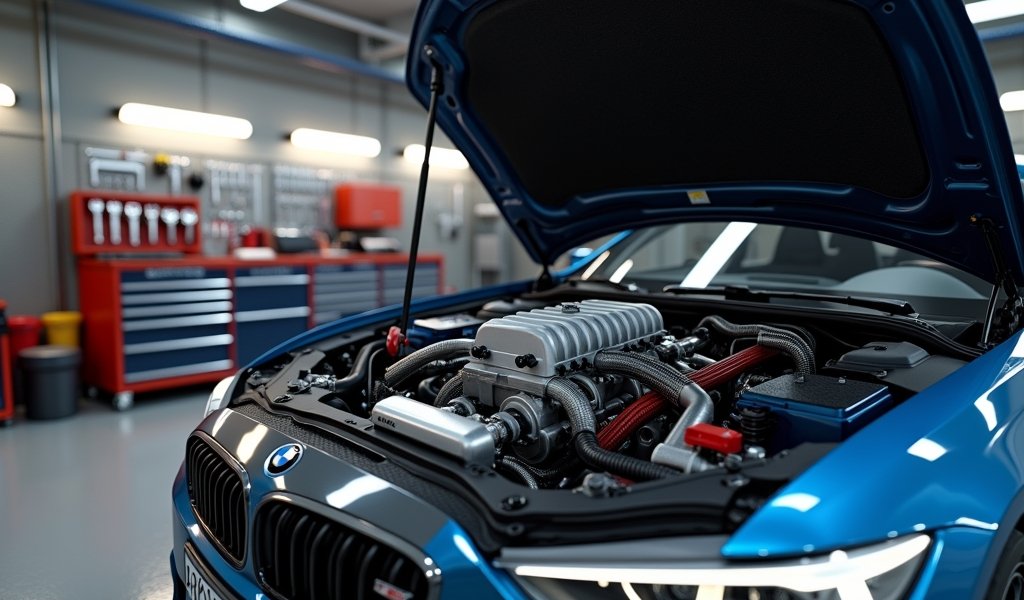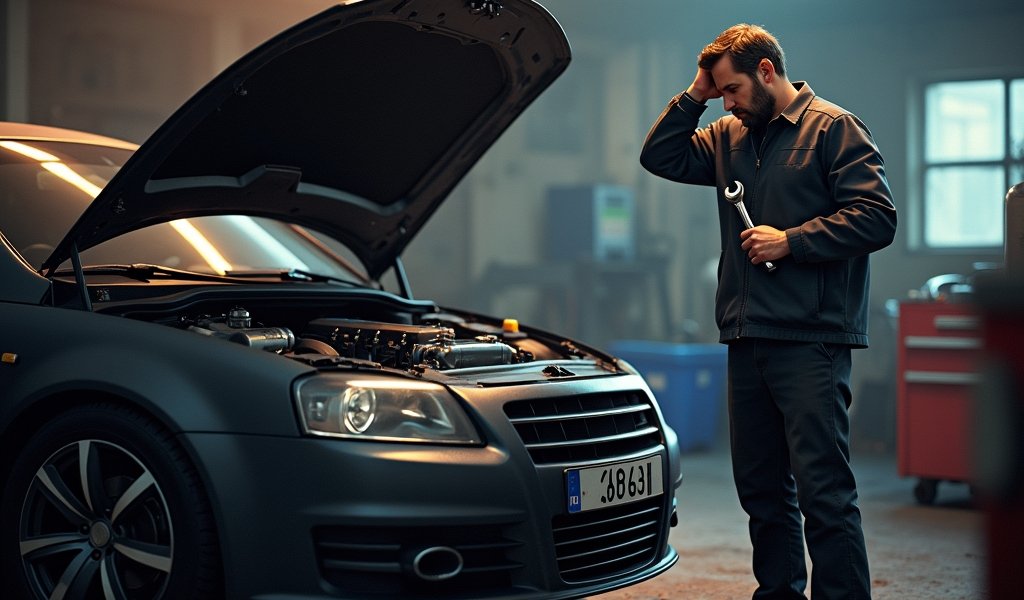Overview
The article explains how Intake Manifold Runner Control (IMRC) systems optimize engine performance by dynamically adjusting airflow at different RPMs, improving both low-end torque and high-end power. It covers signs of IMRC failure, maintenance procedures, cleaning techniques, performance tuning options, and common issues across different vehicle makes, emphasizing that regular inspection and cleaning can prevent expensive repairs while maintaining optimal engine performance.
Table of Contents
- Understanding Intake Manifold Runner Control
- How IMRC Systems Work
- Signs of IMRC System Failure
- Inspection and Maintenance Tips
- Cleaning Procedures for IMRC Systems
- Performance Tuning Your IMRC
- Common IMRC Issues by Vehicle Make
- Conclusion
- Frequently Asked Questions
Understanding Intake Manifold Runner Control
The intake manifold runner control (IMRC) is one of those engine components that doesn’t get much attention until something goes wrong. As a mechanic with over 15 years of experience, I can tell you this unsung hero plays a crucial role in your engine’s performance and efficiency.
Think of your IMRC system as your engine’s breathing coach. Just like how you breathe differently when resting versus running, your engine needs different airflow patterns at varying RPM ranges. The IMRC system makes this possible by dynamically adjusting the length and sometimes the diameter of the intake runners – those passages that deliver air to your engine’s cylinders.
When working properly, this system delivers two major benefits: improved low-end torque for everyday driving situations, and enhanced high-RPM power when you need that extra boost. It’s a brilliant piece of engineering that helps modern engines deliver both efficiency and performance without compromise.
How IMRC Systems Work

Let’s break down how these systems actually work without getting too technical. At its heart, the IMRC system uses a series of flaps, valves, or sliding mechanisms inside your intake manifold. These components change position based on your engine’s operating conditions.
You’ll typically find three main types of IMRC systems:
- Mechanical systems that use physical linkages connected to the throttle
- Vacuum-operated systems that use engine vacuum controlled by solenoids
- Electronic systems with dedicated motors or actuators for precise control
At lower RPMs (like when you’re cruising around town), the IMRC keeps the intake runners longer. This creates a ram-air effect that improves torque – exactly what you need for smooth acceleration from stoplights. When you put your foot down and the RPMs climb, the system switches to shorter runners, allowing maximum airflow for peak horsepower.
This variable geometry isn’t just clever engineering – it’s what allows your 4-cylinder to feel peppy around town while still delivering decent highway passing power. The cold air intake system works together with your IMRC to optimize airflow across all driving conditions.
According to research from the Society of Automotive Engineers, properly functioning IMRC systems can improve low-end torque by up to 10% while maintaining high-RPM power – truly getting the best of both worlds.
Signs of IMRC System Failure
Like most engine components, the IMRC system will give you warning signs when it’s starting to fail. Catching these early can save you from more expensive repairs down the road.
Here are the most common symptoms you might notice:
- Noticeable power loss, especially during acceleration
- Engine hesitation when pressing the accelerator
- Rough idle that seems to come and go
- Check Engine light illumination
- Gradually worsening fuel economy
- Strange noises from the intake during acceleration
In my shop, I often see vehicles come in with specific trouble codes related to IMRC problems. Codes like P0661, P0662 (Intake Manifold Tuning Valve Control Circuit High/Low), or P2006/P2007 are common red flags pointing to IMRC issues.
One customer brought in a Ford F-150 that was struggling to accelerate. The engine would hesitate badly between 2,000-3,000 RPM – exactly where the IMRC system should be transitioning. After diagnosing a stuck IMRC valve, we had his truck running like new again in just a few hours.
If you’re experiencing any of these symptoms, don’t ignore them. A failing IMRC system not only hurts performance but can reduce your fuel economy by up to 10% in some vehicles.
Inspection and Maintenance Tips
Regular inspection of your IMRC system can catch small issues before they become major problems. I recommend checking these components every 30,000 miles or during scheduled tune-ups – whichever comes first.
Here’s my step-by-step inspection process:
- Start with a visual inspection of all vacuum lines connected to the IMRC components
- Check actuator linkages for proper connection and movement
- Look for visible carbon buildup on flaps or valves
- Inspect electrical connectors for corrosion or damage
- Test actuator movement using a diagnostic scanner with bidirectional controls
For a proper inspection, you’ll need a few basic tools: a flashlight with a flexible neck, basic hand tools for removing air intake components if necessary, and ideally a diagnostic scanner capable of performing IMRC actuation tests.
I’ve seen too many DIYers overlook vacuum lines during their inspections. These rubber hoses deteriorate over time and are often the culprit behind IMRC failures. A broken or disconnected vacuum line might cost $5 to fix but can cause symptoms that mimic much more expensive problems.
Prevention is always cheaper than repair. A simple inspection might take 30 minutes but could save you hundreds in repair costs and prevent that frustrating loss of power when you least expect it.
Cleaning Procedures for IMRC Systems

Carbon buildup is the enemy of your IMRC system. Over time, these deposits can cause flaps and valves to stick, preventing proper operation. A thorough cleaning every 60,000 miles can keep everything working smoothly.
Here’s my recommended cleaning procedure:
- Disconnect the battery before beginning any work
- Remove necessary components to access the IMRC system (refer to your vehicle’s service manual)
- Carefully detach IMRC components, taking photos to remember their orientation
- Apply a quality throttle body or intake cleaner to the flaps, shafts, and housing
- Use a soft-bristled brush to gently remove carbon deposits
- For stubborn buildup, let the cleaner soak for 10-15 minutes
- Wipe everything clean and ensure moving parts operate freely
- Reassemble carefully, replacing any gaskets as needed
Always use automotive-specific cleaners rather than general degreasers, which might damage sensitive components. I prefer specialized throttle body cleaners that are designed to dissolve carbon without harming plastics or electronics.
One customer brought in a Nissan with terrible throttle response. The IMRC flaps were practically glued in place with carbon. After a thorough cleaning, the improvement was dramatic – throttle response returned to normal, and his fuel economy improved by nearly 3 MPG!
For preventative maintenance, consider using high-quality fuel with detergent additives. These can help minimize carbon buildup throughout your intake system, including the IMRC components.
Performance Tuning Your IMRC
For performance enthusiasts, the IMRC system holds untapped potential. With some thoughtful modifications, you can extract more power across the RPM range.
Here are some performance-oriented tips:
- Adjust the RPM threshold at which runners switch from long to short configuration
- Install lightweight composite flaps that respond faster than stock components
- Consider ported and polished runner passages for improved airflow
- Add a manual override switch for track day optimization
- Integrate IMRC control into your ECU remapping software for custom tuning
Mid-level IMRC upgrades typically cost $300-700 and can yield 5-15 horsepower gains. For serious enthusiasts, complete system overhauls might run $1,000-2,500 with potential gains of 15-30 horsepower depending on your engine.
I recently worked with a customer who installed a throttle body spacer along with IMRC modifications on his Mustang GT. The combination improved throttle response noticeably and added about 12 horsepower at the wheels – not bad for a weekend’s worth of work!
Remember that IMRC tuning should complement other modifications. There’s little benefit in optimizing intake runners if your exhaust system becomes the bottleneck. Always consider your engine as a complete system when planning performance upgrades.
Common IMRC Issues by Vehicle Make
Different manufacturers have their unique IMRC quirks. Here’s what I commonly see in my shop:
Ford IMRC Issues: Ford’s systems, especially in the 4.6L and 5.4L engines, often suffer from plastic actuator failures. That telltale ticking noise from the top of the engine is usually the IMRC actuator struggling. Replacement with updated components is typically the best solution.
GM/Chevy Runner Control: General Motors vehicles frequently experience issues with their IMRC actuator motors. The good news? These are usually accessible and relatively affordable to replace. Watch for vacuum line deterioration in older models, which can cause erratic runner operation.
Import Car IMRC Systems: Japanese manufacturers like Honda and Toyota incorporate their runner controls into broader variable valve timing systems. These tend to be quite reliable but can be more expensive to repair when problems do occur. European vehicles, especially BMWs, use sophisticated electronic IMRC systems that require specialized diagnostic equipment.
One Dodge owner came in complaining of a strange noise when accelerating. The IMRC shaft had broken internally – a common issue on some Chrysler V6 engines. While not a simple fix, addressing it resolved both the noise and restored the lost performance.
No matter what you drive, understanding these common failure points can help you catch problems early when they’re easier and less expensive to fix.
Conclusion
Your intake manifold runner control system is the unsung hero of your engine’s performance – balancing power, efficiency, and drivability like a skilled juggler. By following the maintenance tips we’ve covered, you’ll ensure this critical system keeps performing at its best for years to come.
Regular inspection, proper cleaning, and occasional testing should become part of your vehicle maintenance routine. For those seeking more from their engines, thoughtful tuning and strategic upgrades can unlock performance potential you might not have realized existed.
Remember that your engine deserves to breathe freely. Give its IMRC system the attention it needs, and it will reward you with responsive, efficient performance through thousands of miles of driving enjoyment.
Whether you’re a DIY enthusiast or someone who prefers to leave maintenance to the professionals, understanding how your IMRC system works empowers you to make better decisions about your vehicle’s care and potentially save hundreds on unnecessary repairs.
Frequently Asked Questions
What happens if my IMRC system fails completely?
Your engine will still run, but you’ll experience reduced power and poorer fuel economy. Most vehicles default to a “limp home” mode that allows basic operation until repairs can be made.
How much does it typically cost to repair an IMRC system?
Repair costs range from $200-400 for simple actuator replacements to $600-1,500 for complete system overhauls. The specific vehicle make and model significantly impact the final price.
Will a failed IMRC trigger a check engine light?
Yes, in most modern vehicles, IMRC failures will trigger a check engine light. The system is monitored by the engine control module to ensure proper operation.
Can I disable my IMRC system instead of repairing it?
While technically possible on some vehicles, disabling the IMRC is generally not recommended. It can reduce performance across the RPM range and may cause emissions test failures.
How often should IMRC systems be serviced?
I recommend inspection every 30,000 miles and cleaning every 60,000 miles. Vehicles operating in dusty environments or frequently driven short distances may need more frequent attention.


Pingback: Variable Intake Runner System DIY Fixes - knowsyourcar.com